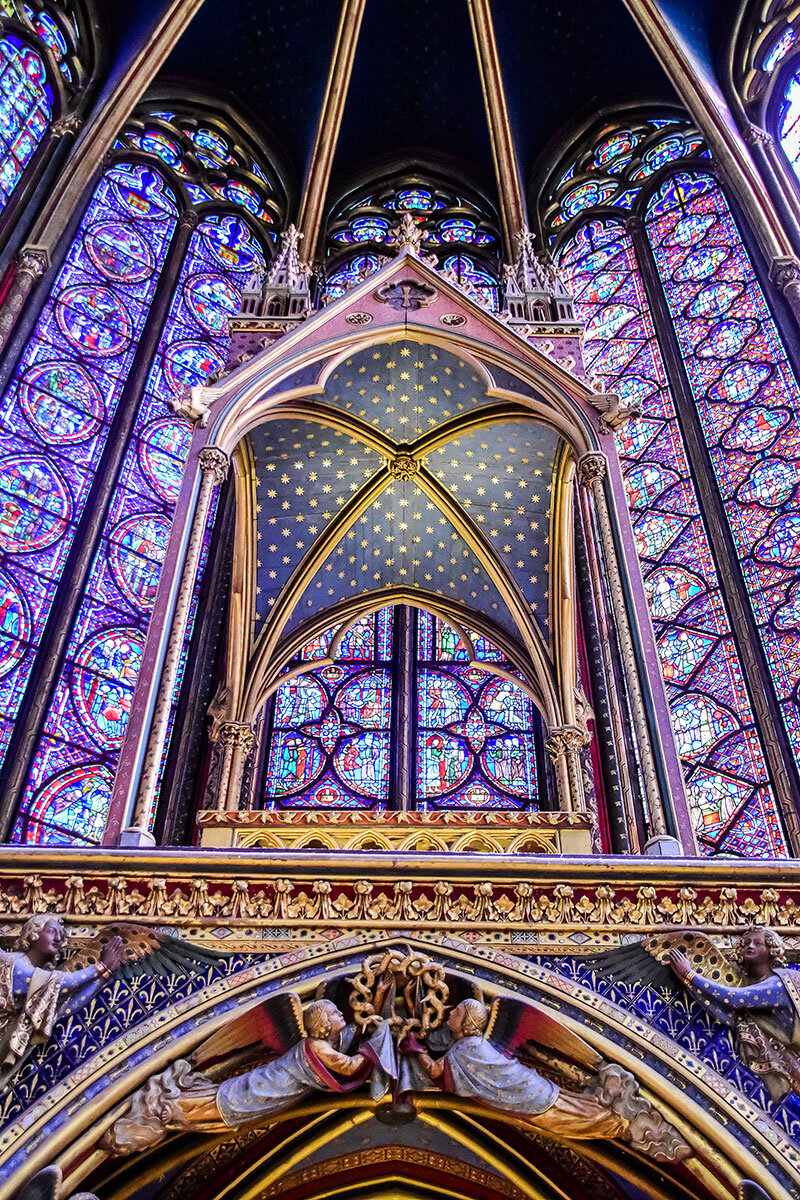The Exquisite Detail of Charpentier's Missa Assumpta est Maria
In the final blog in conjunction with our upcoming live recording of Marc-Antoine Charpentier’s Missa Assumpta est Maria, Edward Higginbottom examines how Charpentier’s work reflects the exquisite detail of La Sainte Chapelle. You can read the first entry here, and the second entry here.
We are standing in the middle of La Sainte Chapelle, a private chapel, albeit belonging to a king. It is not a huge structure. It measures some 118 feet long, and some 56 feet wide. As a proportion of these dimensions, it is the height that stupefies, 139 feet. In other words, the Chapel is another 20 feet higher than it is long. As the eye makes its way up to the distant roof, it does so via 6652 square feet of stained glass. In context, it’s an overwhelming expanse of coloured light, completely effacing the stonework which supports it. Eyes raised and spirits aloft, it’s just possible to sense what it must be like to be encased in a precious reliquary. And there, on the High Altar, is an exquisitely and richly fashioned reliquary, within a reliquary if you like. It holds the Crown of Thorns, the raison d’être of the building.
Heady stuff. As senses go, our experience is first and foremost visual. It is our eye that is satiated. But we are not seeing a single canvas, or a series of canvases. What we are seeing are innumerable scenes, each self-sufficient, each carrying equal visual weight, receding to a point where perhaps the glazier thought to address the Almighty’s eye rather than our own. At one level, we could choose simply to be overwhelmed by this riot of colour and design. At another, we are bound to want to read the glass. Looking and understanding is what this visual experience is really about. We can now read the Bible, but not by scanning a text, rather by scanning images. There are 1134 biblical scenes to contemplate, 1134 separate narratives to follow.
Such is the environment in which Charpentier composed and performed his sacred music during his last years. Does it tell us anything about his music? I think the answer is, yes. Let’s turn to the Gloria of his Missa Assumpta est Maria, to see what I mean. This is how things begin:
Et in terra pax . . . , full scoring, Lent in 2, 22 bars
Laudamus te, benedicimus te, full, Guay in cut C, 5 bars
adoramus te, full, Lent in 2, 4 bars
glorificamus te, full, Guay in cut C, 9 bars
gratias agimus . . . , full in 3/2 time, 16 bars
Domine Deus, Rex caelestis . . . , solo bass in cut C, 10 bars
Domine fili unigenite . . . , solo tenor in cut C, 5 bars
Domine Deus, Agnus De . . . , solo haute-contre in cut C, 6 bars.
In résumé, within the space of 77 bars we encounter eight different tempos or scorings. Bach, in his B minor mass, takes as long (76 bars) to work through just Et in terra pax, one eighth of the above text. That’s an extreme comparison, but not invalid. In Charpentier’s case, it reveals very clearly that the composer was not simply working on a smaller scale, but making a musical virtue out of passing rapidly from one musical idea to another. The only way this makes sense is to listen to his musical mosaic ‘with your eyes’. I know many will find this a perplexing notion! But imagine your eye settling on an image, drinking in its form and colour in a few seconds, and then moving to an adjacent image, and then to the next. The intensity and integrity of each image is gathered in, and becomes part of an accumulated experience. In the same way, we walk through Charpentier’s score, admiring that scene, this evocation, this vocal colour, that instrumental definition. We are not looking for a broad musical paragraph – an epic canvas as it were – but for moments of intimate diversity, as independently responsive to the text as may be devised, each contributing to an accumulated understanding and aesthetic whole.
The degree to which this approach may be applied in particular to the Gloria and Credo of Charpentier’s 1702 Missa Assumpta est Maria, leads me to my conjecture: that the multitude of intimate and highly coloured images found in the glass of La Sainte Chapelle finds a powerful correlate in Charpentier’s music. The density and character of these images conforms to the density and character of images found in the score. The one is reflected in the other. I cannot prove my case, but I can appeal to your imagination.
So, if you can, try literally to ‘envisage’ this music. That is the way in which the early 18th-century Frenchman was asked by the likes of Batteux to listen to his music. For me, it is the way Charpentier’s score seems best to reveal its essence as well as its beauty.
You can watch IT&T’s performance of Marc-Antoine Charpentier’s Missa Assumpta est Maria below:



